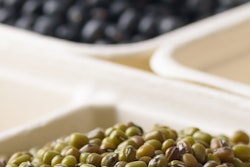
With a projected compound annual growth rate (CAGR) of approximately 4.8% from 2021 to 2026, the industry is poised to evolve in response to shifting market dynamics. While the availability of national statistics remains a challenge, there is abundant insight into key aspects of Kenya’s packaging market, including industry trends, emerging opportunities, and strategies for success.
Kenya, being one of East Africa’s most developed countries, boasts a diverse economy where the agriculture, forestry, and fishing sectors hold a significant market share, contributing about 22% to the overall economy. The manufacturing sector, ranking second, contributes approximately 11% to the Gross Domestic Product (GDP), with packaging representing an estimated 2% of the GDP. The packaging subsector supports food and beverages, pharmaceuticals and healthcare, cosmetics, and personal care.
In response to the country’s growing population and urbanization, the packaging of Fast-Moving Consumer Goods (FMCG) has become a prominent area of focus. The mass market in Kenya, driven by the need for smaller packaging for single-use purposes known as the “kadogo” economy, presents a significant growth sector. Families, relying on daily earnings, focus on securing one meal at a time, leading to an increasing demand for packaged goods across a wide range of FMCG products.
It is important to note that Kenya banned single-use plastic carrier bags in 2017. While the ban targeted lightweight carrier bags with a thickness of less than 30 microns, exceptions were made for materials used in industrial primary packaging, bread packaging, disposable bags for handling biomedical and hazardous waste, and garbage bin liners. Plastic bag carriers remain widely accessible to traders, including food vendors, petty retailers, and wholesalers, due to their affordability, convenience, and versatility, particularly in the informal market economy. This presents an opportunity for alternative packaging solutions in Kenya.
Trends and regulations
Emerging trends and regulations in the industry focus on waste reduction, recycling, and resource conservation. Current figures and percentages show that every Kenyan generates 0.5 kg of waste daily, resulting in a total of more than 22,000 tons of waste generated in Kenya per day and 8 million tons annually. The waste composition is reported as 60% organic, 30% recyclable, and 10% other.
Regarding plastic waste, about 20% of the total waste generated in Kenya per day is plastic. The daily plastic consumption per person is estimated at 0.03 kg. This translates to a yearly plastic waste generation of approximately 0.5 to 1.3 million tons.
However, only 8% of the plastic waste is recycled. The remainder is either landfilled, incinerated, or, in the worst-case scenario, ends up in the environment.
Figures and percentages are expected to vary over time as waste-generation and recycling practices evolve.
To align with sustainability goals, the emerging trends and regulations include:
• Restrictions on single-use plastics; sustainable packaging initiatives outlined in the Kenya Plastics Pact (KPP) Roadmap with a national recycling target of 30% by 2030; draft regulations on Extended Producer Responsibility (EPR) that emphasize collection, recycling, and proper disposal of packaging materials; and the pursuit of a circular economy for plastics through the KPP, launched in October 2021.
• Support and collaboration are crucial in enhancing packaging knowledge and skills in Eastern Africa. The Institute of Packaging Professionals Kenya (IOPPK), as a member of the World Packaging Organization (WPO) and the African Packaging Organization, strives to improve standards, build capabilities, and promote trade. Initiatives such as IoPP’s Certified Professional Packaging (CPP) program will enhance packaging technology expertise among professionals in Kenya.
How to engage
To succeed in the Kenyan packaging market, U.S. companies should undertake comprehensive market research to understand specific packaging needs and requirements across different sectors. Collaborating with local packaging professionals to provide technical support, training, and guidance on best practices and packaging technology is a smart growth strategy. Adapting to local regulations and ensuring compliance with Kenya’s sustainability goals is crucial. Additionally, offering sustainable packaging solutions that emphasize eco-friendly options using recyclable or biodegradable materials and innovative designs to reduce waste is essential.
Building local partnerships with distributors, retailers, and suppliers enhances market reach and understanding, and facilitates valuable insights, distribution networks, and customer relationships.
There is more packaging potential in Kenya than manufacturers in the U.S. might realize. With a little legwork to understand our region’s trends and emerging opportunities, and the development of the right partnerships, Kenya is a land of opportunity in the packaging industry. PW























